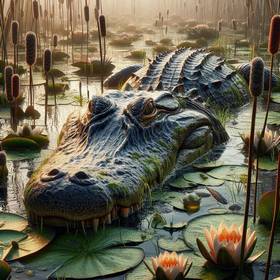Carnivorous Instinct
Alligators possess a powerful carnivorous instinct that makes them formidable predators. Their diet includes fish, amphibians, birds, mammals, and even other reptiles. Using stealth and strength, alligators ambush their prey, striking with incredible speed.
They have evolved to efficiently capture and consume a wide variety of animals, playing a crucial role in maintaining the balance of their ecosystems. These apex predators showcase nature’s raw power and the fascinating adaptations that allow them to thrive in their habitats.
Preferred food!
- Fish
- Amphibians
- Birds
- Mammals
- Reptiles
They have evolved to efficiently capture and consume a wide variety of animals, playing a crucial role in maintaining the balance of their ecosystems. These apex predators showcase nature’s raw power and the fascinating adaptations that allow them to thrive in their habitats.
Preferred food!
- Fish
- Amphibians
- Birds
- Mammals
- Reptiles
Alligator Nutritional Needs
Alligators have specific daily nutritional needs to maintain their health and energy levels. They require a diet rich in protein, primarily from fish, amphibians, birds, and small mammals. Young alligators eat more frequently, consuming smaller prey, while adults can go days without food after a large meal. Essential nutrients like calcium, vital for bone health, are often obtained from prey like fish and turtles. A balanced diet ensures alligators grow strong and remain effective predators in their ecosystems.



